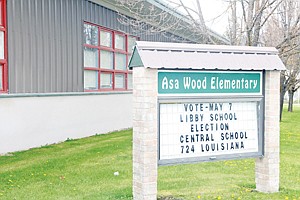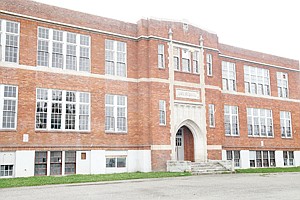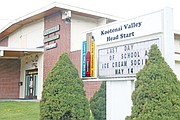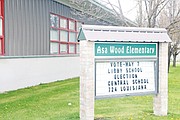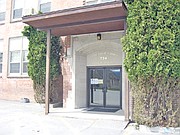Some see properties as solution for cash
Even in lean economic times, the old adage that property ownership equates to wealth rings true: With land ownership, comes money in the bank.
However, as members of Libby’s School Board have come to know, sometimes even land ownership does not necessarily mean a bank account plush with cash.
“There are a couple of things here,” said Libby School Board member Les Nelson, who chairs the district Building Committee. “To let these building go without a look at the future would not be good stewardship. You can’t just sell the family jewels and buy groceries. To sell property, the proceeds must be to purchase property.”
Fact is, the Libby School District is flush with real estate equity and while two-thirds of its property holdings that do not contain district teachers are leased and showing profits, some are critical of these holdings.
“I probably won’t vote Tuesday, but if I did, I think I’d probably vote against it,” said Joe Miller, a Libby High grad who admits to not having
children in the district. “I heard them on the radio saying they got better (student-teacher) ratios now. Hey, when I was in school, we had 35 to 40 kids in a classroom, and all these schools open. I got a good education.”
Miller said the district has scaled back, and it just needs to live on a budget.
“I think they need to make it work. A lot of the same teachers are there from when I was there,” Miller said, referring to doing as much with fewer buildings.
However, as Nelson indicated, those buildings still need to have a buyer, and there really isn’t anyone knocking on that door.
John Ague, a realtor with Loveless Realty, addressed the board last fall about its properties. Ague said the there is little market for old school buldings and stressed the district might not get for them what they are worth.
So, the next solution is to lease space within those buildings, which is what the district is doing.
Of the district’s three properties that do not contain its employees, two buildings are being leased and showing a profit, the McGrade and Plummer centers.
Both buildings, at opposite ends of town are occupied by other tenants, and are adding to the district coffers.
Combined, the two properties are bringing in $53,860 after expenses and insurance.
The third property, Asa Wood, is yet to realize a profit, but there is a move afoot to move the Libby Library and the Food Pantry to the building. Also, there are groups, such as Libby Ballet and the Spinning Squares, that are willing to pay for space.
So, as the district seeks to fill the third of its now unneeded buildings, the added expense of keeping lights, heat and garbage service to the old elementary school is not cheap. Last year, the district spent $20,800 to maintain the empty building, which dropped the district’s lease profits on all three buildings to $33,060.
Still, overall, as Superintendent K.W. Maki pointed out, those properites are not costing the district.
Maki contends regardless of profitability the contributions to the community make them worth it.
At McGrade, there are state offices of the Department of Publich Health and Human Services, which consists of the Office of Public Assistance, Child and Family Services and Adult Protective Services.
“McGrade has worked out well for the district,” Maki said. “We were approached by (the state agencies), and we looked into it. In the end, we fit 36 offices in there. Let me also say, after that building was closed, within a month all the windows in the back of the building were broken out. Having them in there has been good, aside from a fire there a year ago. It’s been a good fit for both.”
Also, the situation at the Plummer Center has been a good fit, to hear Kootenai Valley Head Start Director Peggy Rayome tell it.
“I’m ecstatic,” said Rayome. “This is a perfect environment for our kids. We have a great relationship with Libby public schools.”
The improvements of efficient windows, an upgrade to the kitchen, playground and parking lot have come at a total cost of $210,000.
“It’s a sweet deal for Head Start, and it’s a sweet deal for the school district,” Maki said.
Still, the question remains: Why not sell the buildings and let others manage them.
Maki said the district has its own case study in what can happen when a building is sold, even when there are good intentions. Case in point is the old Libby High School.
“I fought that sale for six years, but in the end, we sold it for $150,000,” Maki said. “That was back in 2006-07. Now, it sits. We could have torn it down, and we wouldn’t have the parking problems we now have for the Memorial Center.”
As for the Memorial Center, Maki is less concerned about it turning a profit.
“We have a cultural arts center that is an asset to the community,” he said. “We have a 550-seat theater.”
For Nelson, who is a liaison to the Kootenai Heritage Council, the benefits of the Memorial Center are immense.
“We would be happy if they just broke neutral. Right now, they’re a little in the black.”



